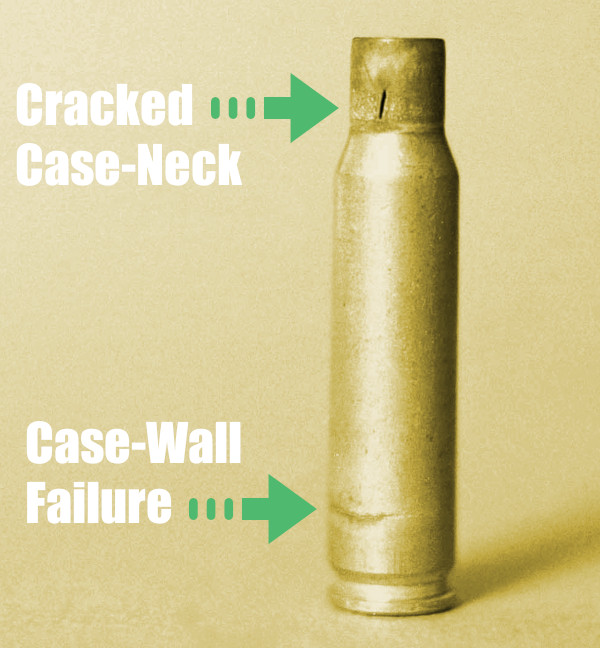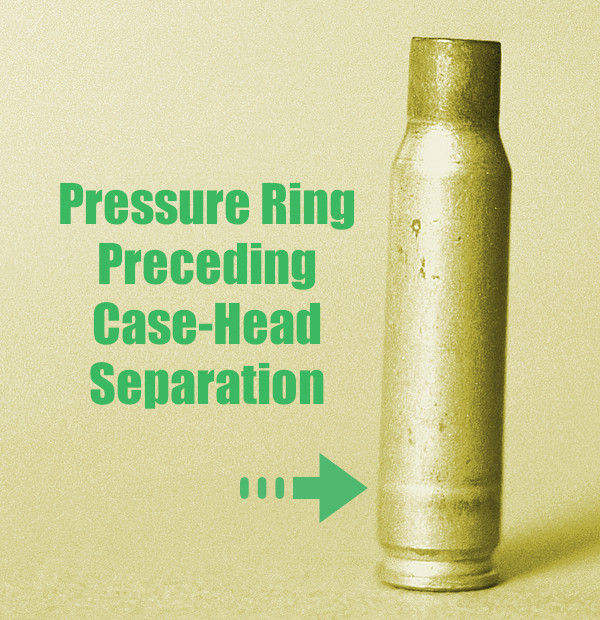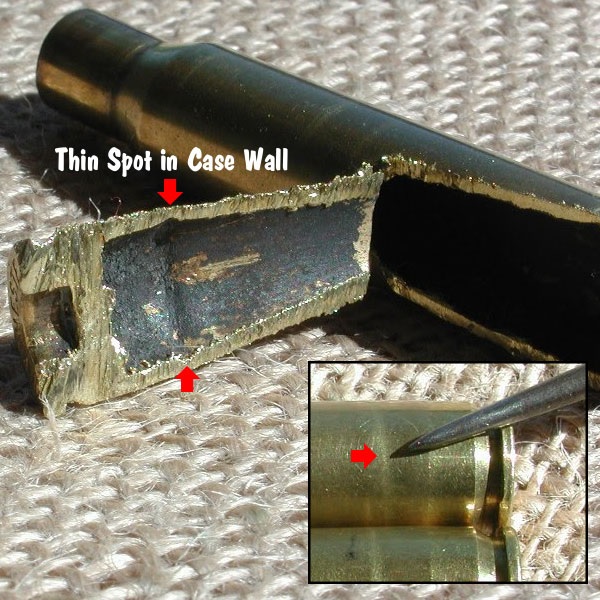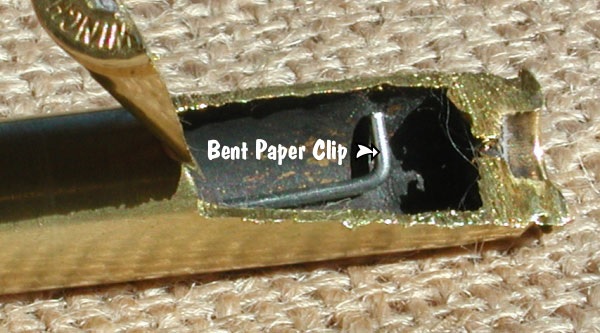"The primary cause of case failure is pressure. If you are loading toward the high end of the pressure spectrum for your calibre and bullet weight, you are subjecting your cases to high pressures and shortening their life."
Here are highlights from an article Glen Zediker wrote for the Midsouth Blog.
In that article, Glen, who sadly passed away in 2020, focused on cartridge brass. Glen identified the most common failures that appear with brass that has been shot multiple times or fired at excessive pressures. Glen explained some simple ways to check your cartridge brass to detect “early warning signs” of case failure, particularly case head separation, which can be dangerous.
Glen authored many excellent books on reloading. This article is adapted from two of Glen’s books: Handloading For Competition and Top-Grade Ammo.
Close-up view of a sectioned case. This one here was “fixin’ to pop”, observed Glen Zediker.
Here are highlights from an article Glen Zediker wrote for the Midsouth Blog. In that article, Glen, who sadly passed away in 2020, focused on cartridge brass. Glen identified the most common failures that appear with brass that has been shot multiple times or fired at excessive pressures. Glen explained some simple ways to check your cartridge brass to detect “early warning signs” of case failure, particularly case head separation, which can be dangerous.
Glen authored many excellent books on reloading. This article is adapted from two of Glen’s books: Handloading For Competition and Top-Grade Ammo.
How Cases Degrade with Multiple Firings By Glen Zediker
This article explains when and how to check after the progress of changes commencing with firing a new case. It’s the “progress of degeneration,” in a way of looking at it because the concern is getting a handle on when enough change in the brass has come about to require attention. Or abandonment. As said then, for me, that’s four firings. That, as stated last time, is when I might see changes that need attention. Also, as said, that figure didn’t come out of a hat, but from my notes while running my competition NRA High Power Rifle loads, [Editor’s Note: With Lapua brass, using moderate loads, in bolt-action rifles, we typically get about ten good (match-worthy) firings. But if you anneal your Lapua brass and run modest pressures, Lapua brass can perform well for 20 or more load cycles.]
The areas most affected are the case neck and case head areas. Case neck walls get thicker [but] the case head area body walls get thinner. Primer pockets get shallower and more prominent in diameter.

This case shows a cracked neck AND a crack (separation) above the case head. Zediker says it is “rare to see one case with both of the most common failures. [This case] was attacked by an M14.”
Case Head — Causes of Separation and Cracking
When a case is under pressure during firing, the brass, like water, flows where it can, where it’s free to move. Of course, the chamber steel limits the amount it can expand. The case shoulder blows fully forward, and the base is slammed against the bolt face. There is, therefore, and in effect, a tug on both ends — it gets stretched. The shoulder area is relatively free to expand to conform to the chamber, but the other end, the case head area, is not. Since that’s the area of the case with the thickest walls, it doesn’t expand “out” much at all. What it does is stretch. The “case head area,” as I refer to it here, is the portion of the case above the web, just above the taper that leads to the extractor groove. The “area” extends approximately an eighth inch up the case body.

Here’s a “pressure ring.” You’ll see this after firing if you see it. And, if you see it, that case is done. The bright ring indicates excessive stretching, which means excessive thinning. If you see a ring circling the case, noticeable because it’s a lighter colour than the case body, and it’s in this area, I’d say that case is done. And that’s right where a “head separation” occurs. It can crack and blow slap in two, and that’s the “separation” part of case head separation.

Photo courtesy GS Arizona.
This is a spot to keep a close watch on as cases age. It is also more “protected” by sizing with less case shoulder setback. That is where the freedom for the stretching movement in this area comes from (the case of the shoulder creates a gap). If you see a sign that a head separation [might happen with relatively few firings], chances are the shoulder set-back and also… load pressure level is excessive.
Bent Paper Clip Case-Wall Gauge

Editor: You can use a bent paper clip to detect potential case wall problems. Could you slide the paper clip inside your case to check for thin spots? GS Arizona explains: “This simple little tool (bent paper clip) will let you check the inside of cases before you reload them. The thin spot will be immediately apparent as you run the clip up the inside of the case. If you see a shiny line on the outside and the clip hits a thin spot inside, it’s time to retire the case.” Photo by GS Arizona.
Monitor Primer Pocket Dimensional Changes
Another case-head-area and pressure-related check is the primer pocket. As said, the primer pocket will get larger in diameter and shallower in depth each firing. As with many such things, the questions are “when” and “how much,” and the main thing is “how much?”
There could be function issues if the pocket gets excessively shallow, judged by a primer that seats fully but isn’t at least a tick below flush with the case base. There’s a risk of a “slam-fire” with a semi-auto that uses a floating firing pin, and if there is an actual protrusion, that has the same effect as insufficient headspace. A primer pocket uniformer can reset the depth of a shallowed primer pocket to what it should be, but the real test for me is how easily the following primer seats into it. I’ll say that case is done if there's significantly less resistance. Shallower can be refurbished. That’s a primary function of a primer pocket uniformer. A larger diameter, though, can’t be fixed. I’ve mentioned in another article or two that, at least, my main gauge of load pressure has become how much primer pocket expansion there’s been.
I recorded a YouTube short on this subject a few years ago, which can be seen here.

